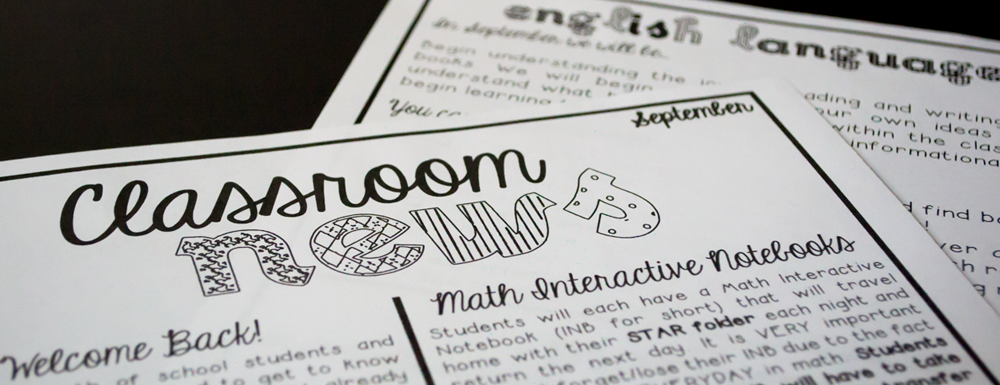
I remember when I first started my teaching program and all the conversations revolved around parent communication and connections. I heard phrases like “home to school connection” and “parent involvement” without really knowing, at the time, what that truly meant. When we talked about newsletters within my college courses, I would always think “it sounds like a great, but who has the time? What parents are going to take the time to read through these?” When I began to do my practicum, I noticed in my cooperating classroom that the teacher I shadowed would send home weekly newsletters that included spelling lists, events for the week, homework notifications, and any other information that was must have for the parents. Again I thought otherwise, as I was more focused on the extra time it took and not the outcome of them. What can I say, I was naive and I was proved wrong (isn’t that the point of student teaching, to learn through mistakes or misconceptions?). Parents would connect with me and reference the newsletter directly in the conversations, proving my original theory incorrect. Parents would send in notes requesting notes for additional copies so they could have one in the car for when they are traveling or a “fridge copy.” I started to learn through that class that they do hold a great importance within and outside of the classroom.
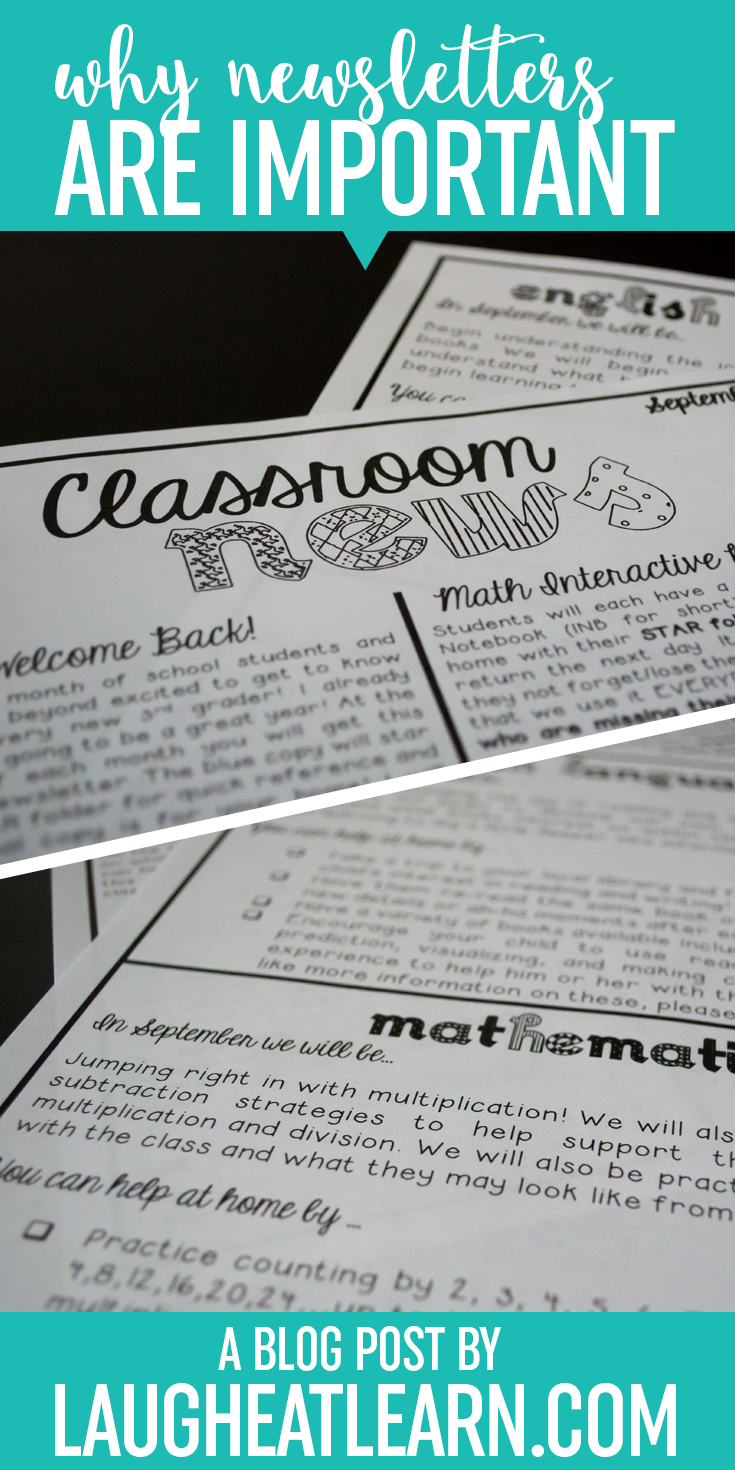
Need a reminder? Pin it to Save!
When I started my student teaching, my amazing cooperating teacher also had newsletters. Shocker! At this time, I begin to believe in them a little more, seeing the effects of the classroom dynamic from my practicum, but still I thought, “weekly newsletters?!” I quickly had a conversation about the newsletters with my co-teacher, asking about everything she does. She explained in detail about her newsletter, bringing up the key phrases I heard at the beginning of my program, “home to school connection” and “parent involvement.” At this point, I was on board with the newsletter because I knew these were keys I needed to incorporate into my teaching, regardless of the time involved. Additionally, my co-teacher did not do weekly newsletters, she did monthly ones. This was already more manageable for me. As my student teaching continued, I practiced with her format and again saw the benefits I saw earlier with the parents and their more willing and wanting to be involved in my classroom.
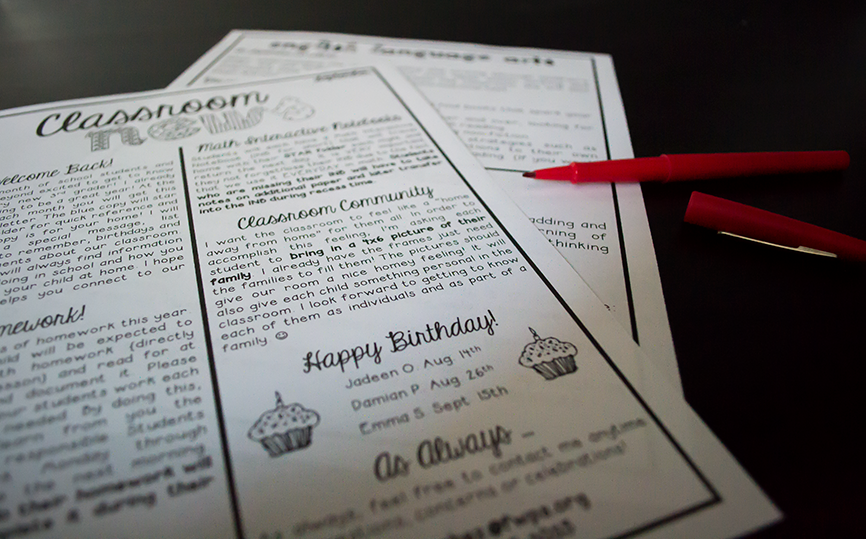
As I started my first year in my own classroom, I knew there was no way around it: find a format that worked for me and get to work. I’ve kept the same simple newsletter for 5 years now. It works for me. Now I have a collection of finished newsletter for Kindergarten, 3rd, and 4th grade, that I can pull out at any time, change a few things around, add student birthdays, and print off. So in reality, it was a lot of work up front, sitting at the computer, and going through events and subjects, but now I’ve got a great library to pull from and it really takes no time at all. The most important thing I took away from my cooperating teacher about newsletters is the priority made on the subjects taught in the classroom, and giving parents ideas each month on how they can help at home. It’s like a sneak peek into your classroom, and you know there are families who LOVE and strive to continue learning at home.
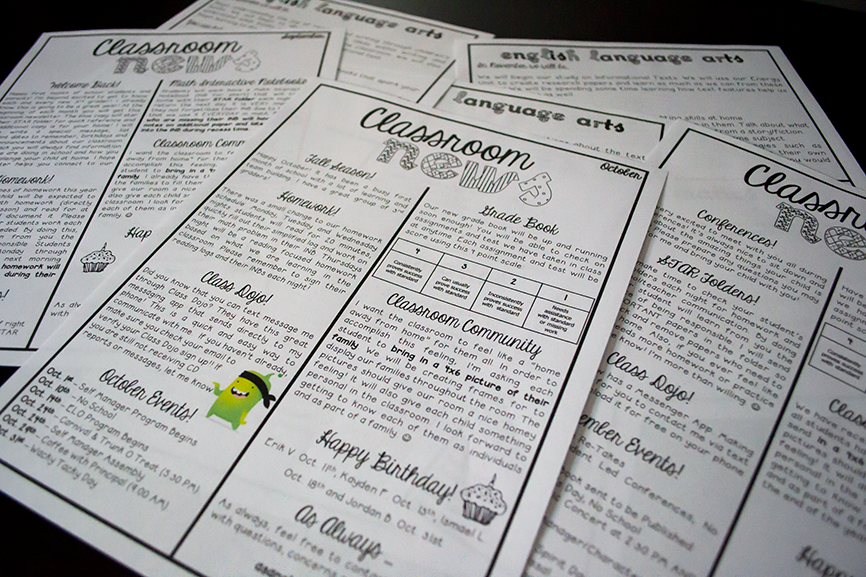
My snippets on the backside for parents are usually easy stuff they can do driving around or even using a computer program provided by the school district. I think the key was what I was teaching that month. This kept me accountable for my students because the parents knew exactly what was happening. This also helped me with grading. Everything I listed in the newsletter was reflected in my grade book in some way.
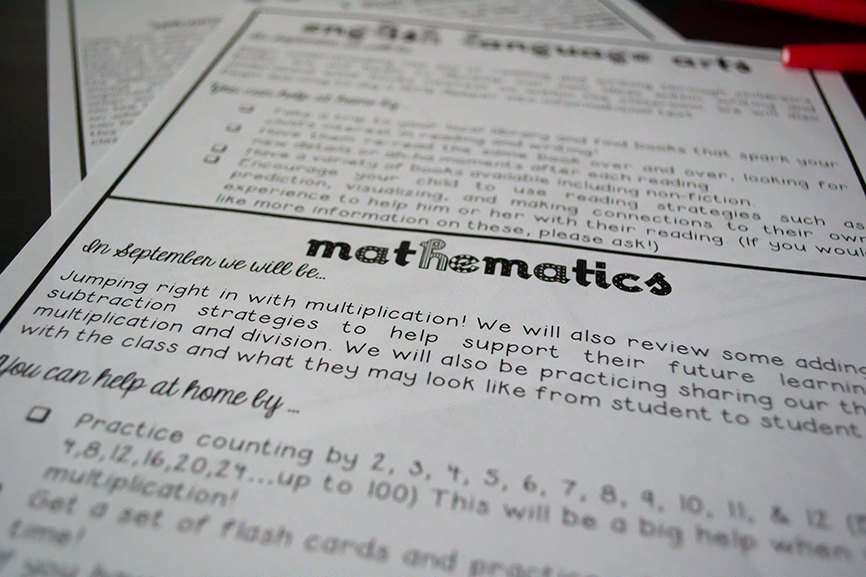
Overall, this is how I came to my simple yet informative newsletter format. It’s easy enough for me to pull up, edit and print out for my student’s families. I always make two copies, one copy is on blue paper and is stored in their STAR folder for quick use, the other one is on white paper and is considered the “fridge copy”. I’ve put together my template for other teachers to use as you see above.
I’m made multiple choices available to fit the needs of your classroom. Most importantly, it includes the back side on how to connect with families in the different subjects you teach in the classroom. Regardless if you use my template or not, make sure you are reaching out to parents in some way either weekly, monthly or even bi-monthly.

I’d love to know, What do you use in your classroom to communicate with parents and inform them on special events and subjects being taught? If you found this useful and want to share with your other teacher friends, pin the image above!

 Need a reminder? Pin it to Save!
Need a reminder? Pin it to Save!



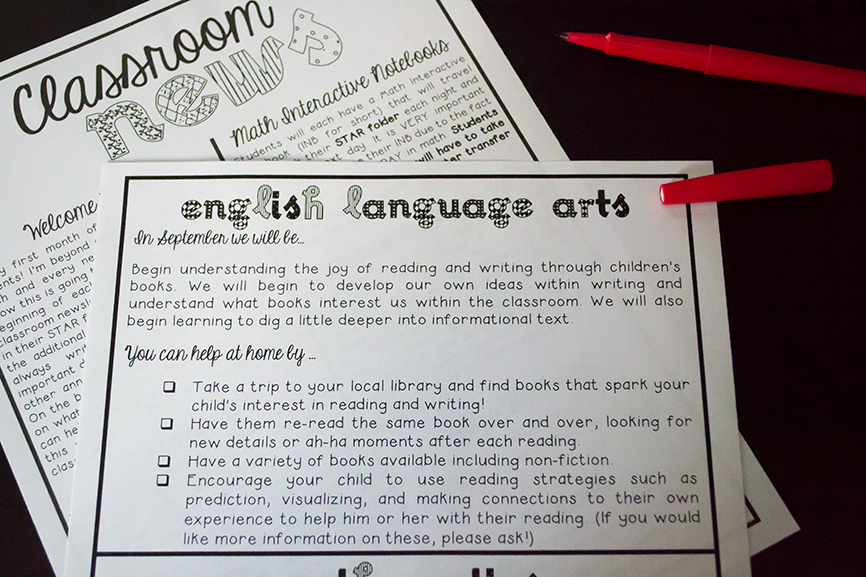

1 Comment on Classroom Newsletters & Their Importance